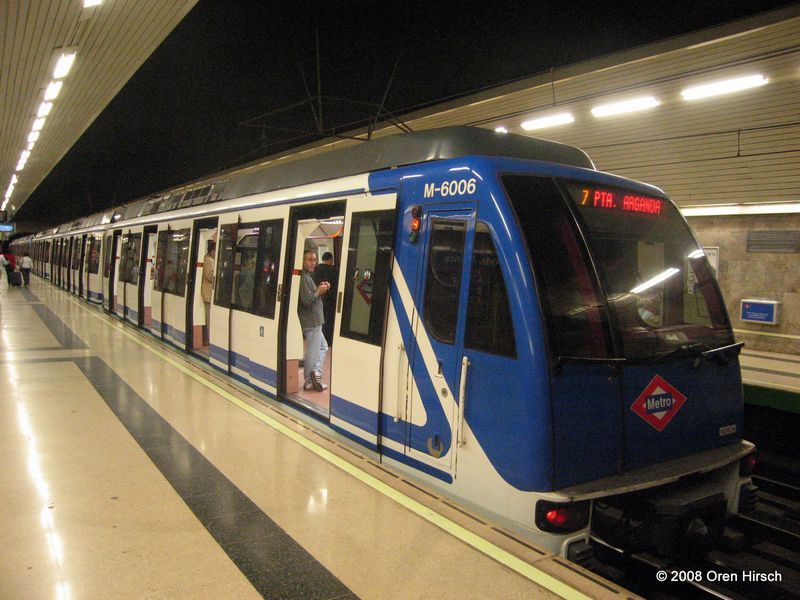Over the years I’ve managed some neat feats in terms of fleets and/or vehicles that I’ve photographed. At one time, I had a photo of every vehicle in the active TCAT fleet in Ithaca, NY. I have photos of most (but not all) of the 46 Jerusalem Light Rail Alstom Citadis 302s. However, back in January, I accomplished a feat that I don’t think I ever expected to do: photographing the same train car on two different continents. And just to be clear, this wasn’t accomplished in Istanbul.
In 1998, the Madrid Metro accepted delivery of its 6000 Series cars from CAF for operation on that system’s Line 9. The 6000 Series were the first Madrid subway cars to feature exterior destination signs and an articulated joint between each pair of cars, and were designed with the needs of Line 9 in mind. I rode and photographed these cars in Madrid each time that I was in that city, first in 2005 and then again in 2008.
In 2013, most of the 6000 Series cars were sold to the Buenos Aires Underground for about 32.6 million Euro, a purchase that has since been derided as the worst rolling stock acquisition in the hundred-plus year history of the Buenos Aires system. Buenos Aires purchased these cars to operate on their Line B, despite some significant differences between the specifications of Buenos Aires Line B and the wide profile Madrid Metro lines. Most notably, the Madrid Metro powers its trains using overhead catenary, as does Buenos Aires for five of its six subway lines, but Line B is the lone Buenos Aires Subte line that uses third rail power. In other words, Buenos Aires officials ordered a fleet of subway cars with the intention of using them on the one line in their network where there was no way to power the cars without significant modifications being made to both the tunnels and the 6000 Series cars themselves. The 6000 Series cars were also narrower the other cars that had historically operated on Line B, requiring “skirts” to be added to the cars in order to close the gap between the train and the station platforms. The 6000 Series trains ultimately entered service in Buenos Aires starting in 2014.
I traveled to Buenos Aires in January 2018 and explored the city’s subway network, so naturally, I re-encountered the 6000 Series cars in their new home. I don’t have logs of which cars I rode in Madrid and which cars I rode in Buenos Aires, but after my trip, I compared the unit numbers in the photos I took in Madrid with those I took in Buenos Aires. Through that process, I discovered that I photographed car 6006 at the Avenida de America station in Madrid on June 11, 2008, and photographed the same car at Carlos Pellegrini, station in Buenos Aires on January 10, 2018.
Here are the aforementioned photos:
